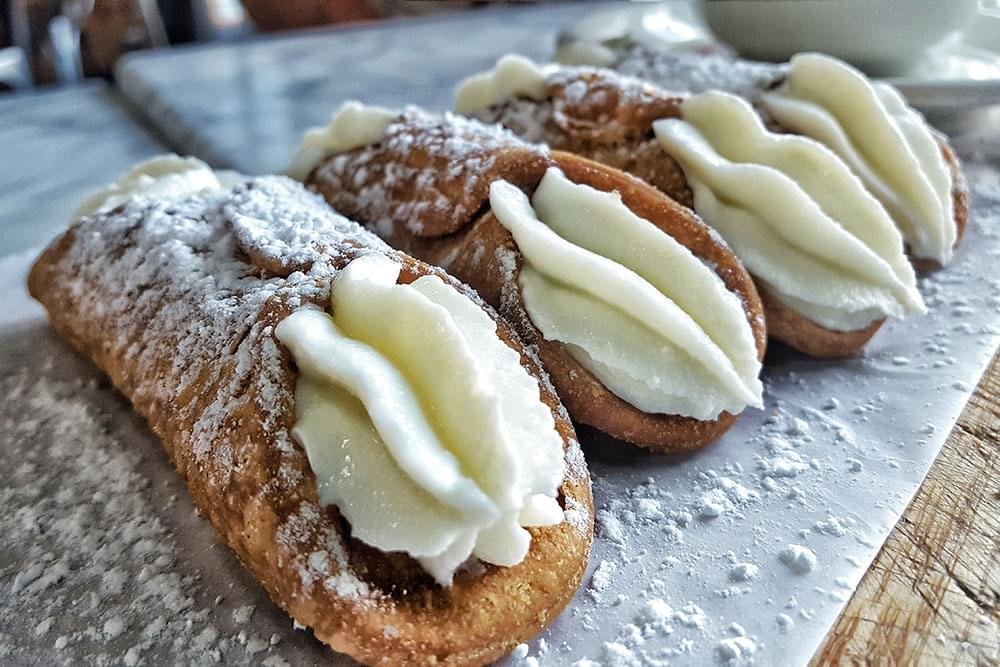
Sicily, the largest island in the Mediterranean Sea, boasts a rich and diverse culinary tradition that reflects its history of cultural influences, from Greek and Roman to Arab and Norman. The regional food of Sicily is a delicious blend of flavors, ingredients, and techniques that make it a must-visit destination for any food enthusiast. In this article, we will take you on a gastronomic journey through the vibrant and mouthwatering world of Sicilian cuisine.
Sicilian cuisine is a testament to its historical past, blending elements from various civilizations that have left their mark on the island. The island's strategic location in the Mediterranean made it a melting pot of flavors and ingredients over the centuries.
Before delving into specific dishes, it's essential to understand the key ingredients that form the foundation of Sicilian cuisine:
Now, let's explore some of the most iconic and delicious dishes that make Sicilian cuisine truly special.
Arancini are iconic Sicilian rice balls that are a popular street food and appetizer. These golden orbs are made from Arborio rice, which is stuffed with a flavorful filling such as ragù (meat sauce), mozzarella cheese, and peas. The rice balls are then coated in breadcrumbs and deep-fried until crispy. Arancini come in various sizes and fillings, making them a versatile and delectable treat.
Named after the famous opera "Norma" by Vincenzo Bellini, this pasta dish is a celebration of Sicilian flavors. It features thick pasta tubes called "maccheroni" or spaghetti, topped with a rich tomato sauce, sautéed eggplant, garlic, fresh basil, and grated ricotta salata cheese. The combination of sweet, smoky, and savory flavors makes Pasta alla Norma a true Sicilian classic.
Caponata is a traditional Sicilian vegetable dish that's both sweet and savory. It consists of fried eggplant cubes mixed with celery, onions, tomatoes, olives, capers, and a sweet and sour agrodolce sauce. Caponata is a flavorful appetizer or side dish that captures the essence of Sicilian cuisine with its balance of flavors and textures.
Panelle are popular street food snacks in Sicily, especially in Palermo. These golden fritters are made from chickpea flour, water, and seasonings, then deep-fried until crispy. They are often served in a sandwich with a soft roll called "muffuletta," creating a simple yet satisfying snack that's full of flavor.
This pasta dish showcases the island's love for seafood and its Arabic influence. Pasta con le Sarde features bucatini or spaghetti pasta, sardines, fennel, saffron, pine nuts, and raisins. The combination of salty sardines, aromatic saffron, and the sweetness of raisins creates a unique and delightful flavor profile.
No exploration of Sicilian cuisine would be complete without mentioning cannoli. These iconic Italian desserts consist of crispy, fried pastry tubes filled with sweet ricotta cheese and often adorned with candied fruit, chocolate chips, or pistachios. Cannoli are a beloved treat worldwide and represent the sweet side of Sicilian gastronomy.
Sicily's scorching summers call for refreshing treats, and granita delivers. It's a semi-frozen dessert made from crushed ice and fruit juice, most commonly lemon or almond. Enjoyed with a fluffy brioche bun, this combination is a delightful way to beat the heat and indulge in the island's flavors.
Cassata Siciliana is a decadent Sicilian dessert that is both visually stunning and delicious. It consists of a sponge cake soaked in liqueur, layered with sweetened ricotta cheese, candied fruit, and marzipan. The cake is then covered in a vibrant layer of green-colored icing, creating a work of art that's as delightful to eat as it is to look at.
Sicily is also known for its wine production. The region offers a wide variety of wines, including Nero d'Avola, a robust red wine, and Marsala, a fortified wine used in cooking and enjoyed as an aperitif. A glass of Sicilian wine perfectly complements the island's flavorful dishes.
Sicilian cuisine's richness and diversity are a direct result of the various cultural influences that have shaped the island over centuries. These influences have not only contributed to the ingredients and flavors of Sicilian food but also to its traditions and culinary practices.
Sicilian cuisine is a captivating journey through history and flavor. It's a testament to the island's rich cultural heritage and the culinary creativity of its people. From the iconic arancini to the sweet delights of cannoli, Sicilian food offers a diverse and delectable experience for food enthusiasts. Whether you're exploring the bustling streets of Palermo or relaxing in a quaint seaside village, Sicily's regional food will leave an indelible mark on your palate and your heart.

More Details